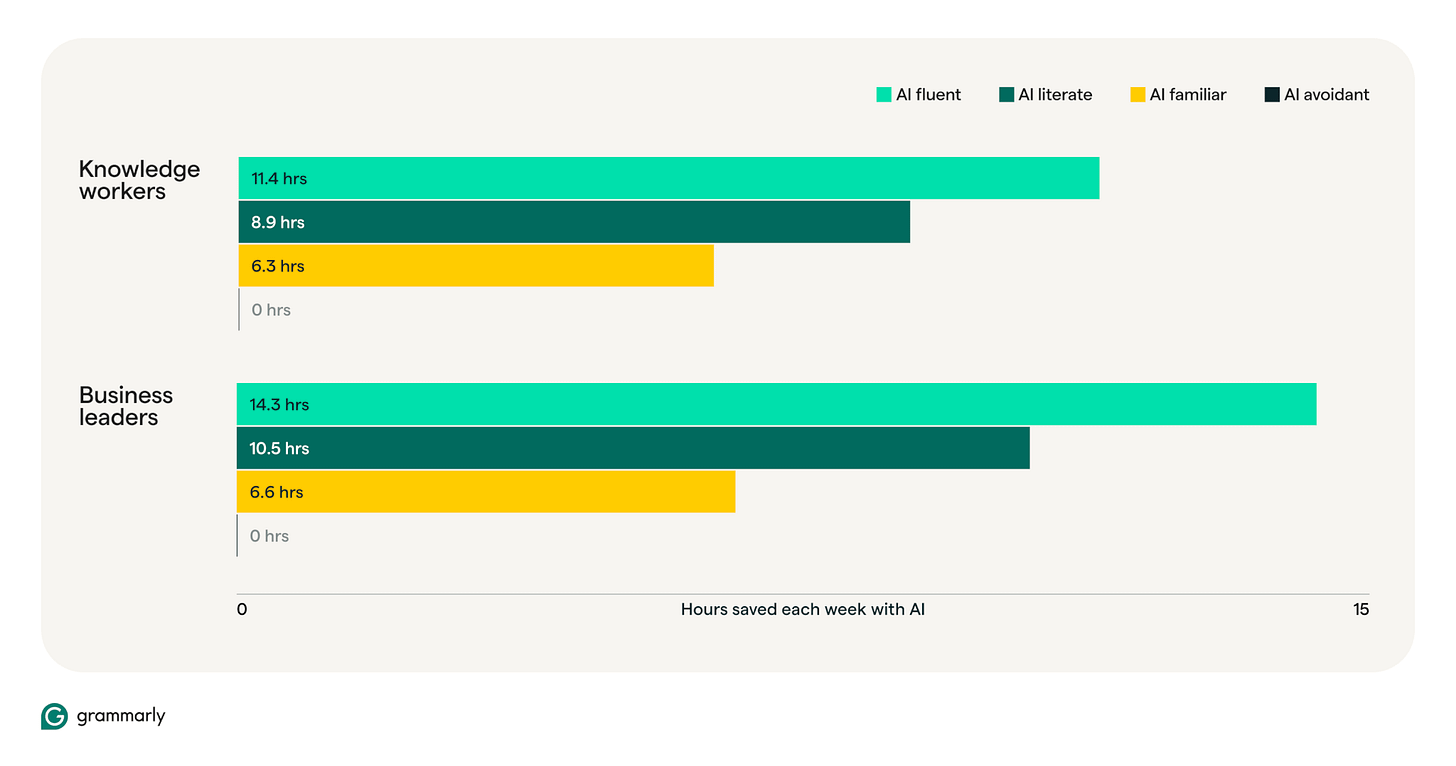AI Bubble or AI Execution Problem?
Why the panic headlines miss the point about what's actually happening in organizations
Everyone's talking about the AI bubble—whether we're heading for a bust, if valuations are inflated, and whether this is all just hype. But the answer is more nuanced than the headlines suggest. This isn't fundamentally a technology issue; it's a human one.
Behind closed doors, I'm hearing about rushed investments, overnight strategies, and executives trying to appease boards with AI initiatives that sound impressive on paper but fall apart in practice.
This is the backdrop for MIT's latest bombshell: 95% of generative AI pilots at companies are failing to deliver meaningful ROI. Cue the market frenzy, the bubble headlines, and the inevitable "I told you so" articles about AI being overhyped.
But here's the reality check we all need: This isn't a technology problem—it's an execution problem. And where AI is implemented thoughtfully, organizations aren't just seeing modest improvements; they're achieving transformational gains that rewrite the business case.
The Panic Behind the Pilot Programs
Our research consistently shows that AI chaos isn't happening because the technology doesn't work—it's happening because organizations are treating AI like a band-aid for problems that need surgery. The MIT report, when you read beyond the headlines, confirms this: companies are implementing AI without addressing underlying business needs, cultural alignment, or change management.
Last year, with Prologis, we found that 80% of executives report external pressure to adopt AI practices to stay competitive, yet 94% face implementation challenges, including security concerns, data quality issues, and the complexity of organizational change. Translation: Everyone's rushing to "do AI" without asking the fundamental question—what problems are we actually trying to solve?
Sweet Spots of AI Effectiveness

But let's look at where AI is actually working—because the results show what's possible when implementation is done thoughtfully.
Aditya Challapally, the lead MIT researcher behind the report, offers crucial insight into what separates success from failure: "Some large companies' pilots and younger startups are really excelling with generative AI. Startups led by 19- or 20-year-olds, for example, have seen revenues jump from zero to $20 million in a year. It's because they pick one pain point, execute well, and partner smartly with companies who use their tools."
This isn't just about age or startup agility—it's about approaching AI with a learner's mindset. These successful organizations start small, focus intensely on solving one specific problem, and iterate based on results rather than trying to boil the ocean with a comprehensive AI transformation.
Our recent research with GitLab reveals that in software development, where AI adoption has been strategic and well-executed, companies are seeing extraordinary returns:
$28,249 saved per developer annually from AI investments
44% increase in revenue attributed to AI use
48% increase in developer productivity
91% of executives say their board is bought into software innovation benefits
Similarly, our Grammarly research shows that when workers become AI-fluent (not just AI-familiar), the productivity gains compound dramatically. AI-fluent business leaders save 10.7 hours per week, while power users achieve 19% greater effectiveness than their less fluent colleagues.
These aren't marginal improvements—they're meaningful transformations.
It's a People Problem, Not a Tech Problem

What separates success from failure? It comes down to recognizing that AI success is fundamentally about people and process, not just technology.
The successful implementations share common characteristics:
They solve real business problems first. Instead of asking "How can we use AI?" they ask "What problems need solving, and could AI help?" They adopt the learner's mindset that Challapally observed—picking one pain point and executing well, rather than trying to transform everything simultaneously.
They invest in change management. Our GitLab research shows that 92% of executives believe businesses should prioritize training employees to work alongside agentic AI, understanding that technology adoption requires cultural transformation.
They align organizationally before they invest. Rather than rushing pilots to appease boards, they build consensus around strategy and expected outcomes.
They balance innovation with caution. The GitLab research shows 53% are implementing regulatory-aligned governance measures, recognizing that moving fast requires moving thoughtfully.
What's Next: Moving Beyond the Bubble Talk
The AI bubble conversation misses the fundamental point: while markets swing and headlines scream, the organizations that approach this as a strategic capability-building exercise—not a technology rush—are quietly building sustainable competitive advantages.
Americans seem to understand this instinctively. 77% of Americans want companies to take AI slow to get it right rather than speeding ahead and risking mistakes. This public sentiment aligns perfectly with what the data shows: the successful implementations aren't the fastest ones—they're the most thoughtful ones.
The real question isn't whether we're in a bubble. It's whether your organization will do the work required to actually transform, or just slap an AI label on existing problems. In a world where everyone's talking about AI transformation, the competitive advantage goes to those who actually know what they're transforming—and have the patience to do it right.
3 Links
Curiosity is contagious; if you like this newsletter, please share it!!
Penned by Libby Rodney and Abbey Lunney, founders of the Thought Leadership + Futures Group at The Harris Poll.
Thanks for reading The Next Big Think! Subscribe for free to receive new posts and support my work.










